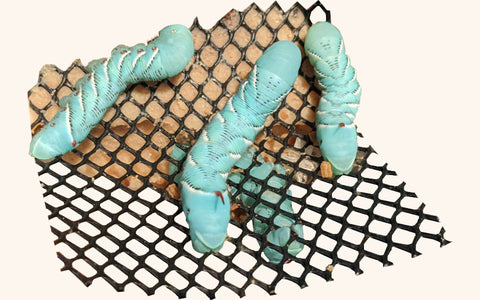Table of Contents
Introduction
During the colder winter months, it is important to keep your reptiles fed with nutritional-rich, live insects. However, unless you have a colony established, you will need to order them. Of course, the survivability of the insects during the winter months can be a challenge during cross-country shipping. To provide you with the best quality products, it is important to know the limitations of each feeder insect we carry. This article will cover the different insects we carry and provide background on their cold tolerances, allowing you to determine which insect you would like to purchase. The following insects are listed in ascending order from least to most tolerant towards the cold.
Crickets

Acheta domesticus (Orthoptera: Gryllidae) are ideal feeder insects for your reptile. However, crickets are very sensitive to the cold. Research suggests that temperatures below 77–80°F (25–27°C) can lead to decreased survivability and colony collapse. It is suggested to keep crickets at temperatures of 80°F (27°C) to prevent mortality. Because of this species’ sensitivity to cold, we would not recommend ordering crickets during the colder winter months—our own experience has shown that these insects are four-times more likely to perish during winter shipments.
Dubia Roaches

Blaptica dubia, commonly known as Dubia roaches, originate from Central and South America and thus are used to tropical climates. Their optimal temperature range for breeding and growth is between 80°F to 95°F (27°C to 35°C). Temperatures below 60°F (15°C) can slow their metabolism drastically, making them lethargic, while prolonged exposure can be lethal. At temperatures below 50°F (10°C), there is a significant risk of mortality, especially if exposure lasts for extended periods. Considering the potential temperature drops during cross-country shipping in the winter months, it's crucial to ensure adequate insulation and, if necessary, use heat packs. Despite their tropical nature, with the right precautions, it is feasible to ship Dubia roaches during winter. However, always ensure to monitor the forecasted temperatures for the shipping duration, and if extreme cold is expected, it might be best to delay the shipment.
Discoid Roaches

Blaberus discoidalis (Blattodea: Blaberidae) is a tropical species of roach. Like most species of roaches, they are not cold tolerant. One research article has indicated survivorship when acclimatized to temperatures of 59°F (15°C); although to what percentage is unknown. We would not recommend this discoid roaches for winter travel.
Superworms

Zophobas morio (Coleoptera: Tenebrionidae) are fatty and nutritionally rich insects that are great for your reptilian pet—scientists are also investigating this species as a meat replacement for human consumption. The ideal temperature for these darkling beetle larvae is 80–86°F (27–30°C), with research suggesting that temperatures of 68°F (20°C) decrease survivability and weight gain. There are reports of death with temperatures below 60°F (15°C). Despite their fatty profile, superworms appear to be well suited for colder temperatures.
Hornworms

Manduca sexta (Lepidoptera: Sphingidae) can be kept at temperatures as low as 68°F (20°C). Some sources even state that hornworms can survive for extended periods in temperatures as low as 55°F (12°C). Lower temperatures will delay growth and physiological processes, but prolonged exposure to cold will lead to death. It is recommended to not keep your hornworms at temperatures lower than 45°F (7°C) for more than two days, if possible.
Silkworms

Bombyx mori (Lepidoptera: Bombycidae) has had extensive research performed on its cold tolerance as a means of improving silk production. Sericulture research has indicated that temperatures between 68–82°F (20–28°C) can be safe for the insect, with lower temperatures possibly delaying growth. Research has suggested within older silkworms, one day starvation and mild cold shocks can improve cold tolerance in this species. The tested silkworms recovered cold induced comas, 32°F (0°C) for 1 hour,
